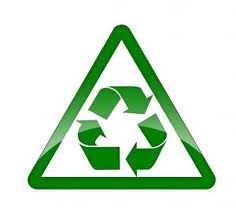 What happens to prospects when they leak from your funnel? I'm talking about people who have expressed interest in your products or services, but somewhere along the line they dropped off the radar.
What happens to prospects when they leak from your funnel? I'm talking about people who have expressed interest in your products or services, but somewhere along the line they dropped off the radar.
The issue of leaked leads is not a pleasant conversation for most organisations, particularly for the sales team. It's understandable, most people would prefer to discuss successes. It's better to focus on why we have won, not why we have lost, right?
*Cue sad trombone* Wrong! It's simple arithmetic. In the journey from first contact as an unqualified lead to customer, typically 90%+ of leads will "leak" from our sales funnel.
It's common to see a 2-5% response rate for first mail outs, and of those respondents, you would be fortunate to have 50% proceed to a sales meeting and 50% to proposal stage, after which you might win one third of all deals.
So what should you do with the prospects that didn't complete the buyer journey? Simply cast them aside? Pretend they don't exist? Sure, some of them will never be customers, but many of them may well have a business problem that you are in the business of solving, but for some reason the current timing was not right. Perhaps it didn't fit in with the budget cycle, perhaps other projects were more important at the time, perhaps they were restructuring.
Why invest so much in your leads if you're going to give up on them at the first sign of difficulty? Imagine if you were able to re engage with just 20% of your leaked leads. Your sales would increase substantially, and best of all, you would be leveraging existing campaigns and resources.
How? By creating systematic, rhythmic, recycling tactics. Marketing campaigns frequently exclude specific recycling tactics that keep leaked leads in the loop. Having structured recycling tactics unclogs your sales funnel and gets sales people focusing on current prospects with business problems that need solving now.
So what might a recycling tactic look like and how does it work?
The secret is to send regular yet valuable communications to your leaked buyers. Make sure to refrain from product pitches and solution flogs, which are deeply boring and irrelevant to buyers without a clearly defined need!
Relevant content is king. Write to your wayward leads about problems they face in their worlds (not yours). Write short whitepapers and articles that address these problems. Another excellent way to communicate is to send short case studies that demonstrate the solving of relevant business problems. Recycling tactics must be affordable and easy to execute as they must often be repeated until prospects are finally ready to engage.
Employ the "rule of 5" for every core piece of content: think of 5 ways to repurpose content, ensuring you maximise the return on your investment of time and effort.
Additional thought-leadership tactics, such as webinars and breakfast briefings, are more advanced (and expensive) recycling tactics, and therefore should be reserved for prospects who appear most likely to re-engage.
"But how do I know when prospects are ready to re-engage?" Ask them! Use a smart marketing automation system to profile respondents before they download content.
"But I haven't got time to write all these white papers and case studies!" Consider outsourcing content production to an experienced content marketing agency.
If you are interested in creating compelling marketing content, increasing the "stickiness" of your website and nurturing leads through the buying journey - then check out our free ebook 'The Content Marketing Revolution':
What recycling tactics do you find most effective? Let us know in the comments section below.


